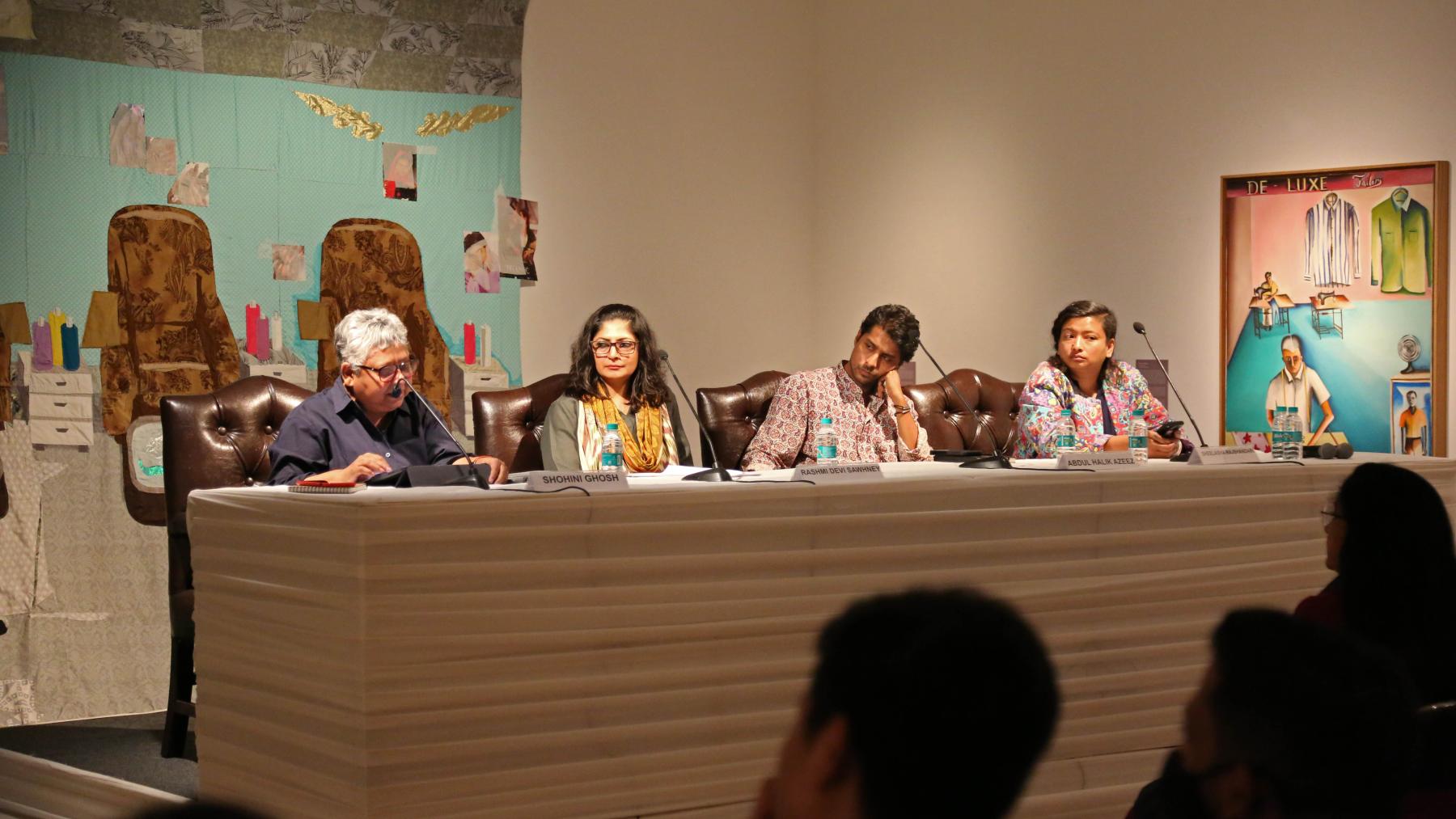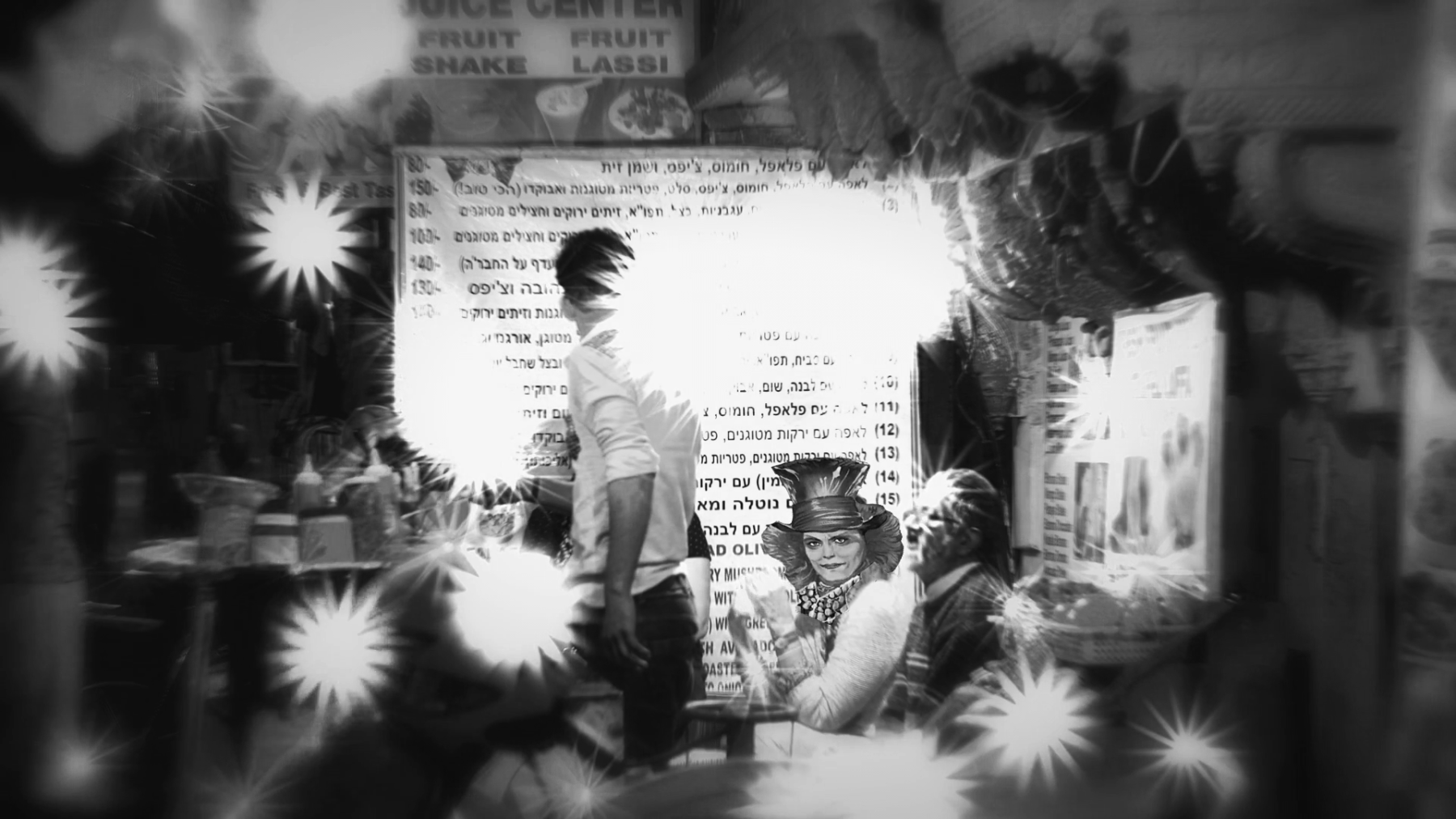Imaging South Asia: The Turn of a Kaleidoscope
With the backdrop of Hangama Amiri's “Sahar, Nail Salon #1” setting the scene, the symposium Imaging South Asia at the Kiran Nadar Museum of Art (KNMA), Saket, brought together a range of artists, curators and critics to ruminate on the notion of South Asia. Organised by the Alkazi Foundation for the Arts and the KNMA, the symposium was bookended by the exhibition Pop South Asia: Artistic Explorations in the Popular, co-curated by Iftikhar Dadi and Roobina Karode, and the release of the thematic reader Unframed: Discovering Image Practices in South Asia, edited by Rahaab Allana.
Presenting some of the questions that emerged from these two exercises as entry points, the event was imagined as “an act of reformation.” Co-chair Rahaab Allana, in his opening remarks, mentioned how the symposium was envisioned as a site for “new ethnographies of practice” and “new genealogies” to emerge, that would allow the gathering to think through “the elusive and multivalent notion of what South Asia is and can be.” In her address to the audience, co-chair Roobina Karode highlighted the practitioners’ engagement with mass culture that was not superficial but rather could include intergenerational and transnational dialogue and forms of subversion to enable a decentring of art. Using the kaleidoscope as a metaphor in the context of the exhibition, she referenced images as forms of representation that are in a constant state of flux. This metaphor can be extended further to the symposium presentations as each of the participants shed light on their distinct perspective of engaging with “South Asia.”

The panel “New Images and Media” consisted of presentations by Prof Shohini Ghosh, Rashmi Devi Sawhney, Abdul Halik Azeez and Sheelasha Rajbhandari. (Imaging South Asia, KNMA, Saket, 8 April 2023. Image courtesy of The Alkazi Foundation for the Arts.)
Titled “New Images and Media”, the first session was moderated by Prof Shohini Ghosh. The panel consisted of Rashmi Devi Sawhney, Abdul Halik Azeez and Sheelasha Rajbhandari. Opening the discussion, Ghosh remarked on the role of the internet and the digital turn in generating new methods of storytelling, prominently visible in the confessionalisation of culture. As notions of privacy and publicness are redefined, older binaries of fiction/non-fiction have been replaced with hybrid modes of engagement that speak to a range of experiences and affect. Ghosh illustrated this by referring to a student film from Jamia Millia Islamia titled Song of the ‘Other’ Firefly (2018). Using the figure of jugni, a feminine spirit in Punjabi folk music, the film draws on songs, poetry, narration and interviews with Sufi singers to explore the meaning of freedom. A figurative representation, Jugni traverses the city on a journey of self-discovery. Responding to the 2012 gang rape and murder of Jyoti Singh in Delhi, Jugni visits the bus stop from where Singh was picked up and stops for a moment of silence. Ghosh spoke about how the camera remains still while Jugni moves on, marking a memorial in the spectral landscape of Delhi. Using this film as an example of crossing borders and dissolving them in the contemporary moment, Ghosh then moved to other spectres of the past that exist in fragments of silence.
Drawing on Ananya Jahanara Kabir’s idea of the phantom map in the context of the partition of the subcontinent, Ghosh spoke of her father who was from present-day Bangladesh. When passports were made mandatory in the 1950s, he refused to go back with a passport, perhaps because he imagined himself to be a citizen of the world. The role of documentation in establishing identity forms eerie connections to the present where citizens must furnish proof of belonging to the country. In this context, Ghosh concluded by invoking the pre-Partition Lucknow in Qurratulain Hyder’s novel Mere Bhi Sanam Khane (My Temples, Too, 1965), drawing hope from the imagination and possibility of such a world.

Cool Memories of Remote Gods. (Mochu, 2017. Digital Video, 14:48 minutes. Commissioned by Sharjah Art Foundation.)
Tracing the understanding of and distinctions between nation, state, region and the local through the work of scholars such as Benedict Anderson, MSS Pandian and Gautam Bhan among others, Rashmi Devi Sawhney argued for a productive grappling with terminology. She highlighted how “South Asia” as a term had been constructed by American policy in the 1950s and 1960s. Thus, she proposed its use as a placeholder, which enables us to think through the complexities of the region as we continue to try to make sense of it. Sawhney also explored the use of the term “new media” to only refer to the digital realm, emphasising the relative nature of “new” given that even printed books were considered “new media” at some point in time. However, Sawhney also pointed to digital media’s potential as it challenged notions of access and value, existing only as copies through circulation. Looking at the two terms in conjunction, Sawhney spoke of forms that are unique to the region, specifically the materiality of practice and the ability to find ways of repurposing media forms. This included examples as varied as the practice of studio photography or the creation of toys from discarded film reels.

Treaty of Peace and Friendship - This is what Friends Are For (Sheelasha Rajbhandari. Nepal, 2017.)
Sheelasha Rajbhandari questioned the understanding of the “popular” by examining representations of indigeneity in Nepal. She pointed out how in the West, Nepal is often exoticised in mainstream culture, where indigenous people are considered “savages.” The government of Nepal is also complicit in exploiting these communities and pigeonholing them. Drawing examples from government publicity, Rajbhandari argued how people who have been displaced from their lands are expected to entertain tourists in the name of preserving culture. Rajbhandari also highlighted how technology and forms of new media enable these communities to document their own lives, counter forms of prejudice and reclaim space and identity. As a part of the Artree Nepal Collective, Rajabhandari showcased works by the various members that resist the romaticisation of indigenous communities, their erasure from history, as well as heteronormative and linguistic parochialism. Technology thus offers hope for the future, where speculation and imagination become ways of re-forging and reclaiming identity.

Screenshot from Mangdem'ma: an invocation for the healing of Adivasi spirits and lands (Mekh Limbu. Nepal, 2022.)
Abdul Halik Azeez spoke about his practice in the context of Sri Lanka, tracing ephemera as forms of anti-evidence. The artist referred to his works being “in progress”, perhaps alluding to the ephemeral nature of making itself. His moving image work Pics or it didn’t happen (2016) featured as part of Pop South Asia, consists essentially of what Azeez calls a “photodump” from his personal archive, where the virtual and the real collapse, as the latter is mediated by the former. His more recent work Lately I have been thinking about exorcisms and Tik Tok (2022), which he spoke about in his presentation, takes the form of a desktop lecture and performance to examine Tik Tok trends, mental health and exorcism. Azeez described his practice deploying the digital space as a platform to contemplate these experiences, not necessarily to provide solutions.

Screenshot from “Lately I have been thinking about exorcisms and Tik Tok” (Abdul Halik Azeez. 2022. Single channel video, 4:58 minutes.)
This open-ended approach underscored the symposium as it offered differing constellations of inhabiting and engaging with the site of South Asia. By bringing into dialogue distinct modes of intervention through interdisciplinary and intersectional forms of understanding, the potential of the digital emerged. The digital as “new” media allows us to speak of the past, invoking it as a spectral presence, or redressing it through the democratisation of forms of (self) representation. Sparking hybrid narratives, it allows for an articulation of resistance through playfulness. Like the turn of a kaleidoscope, each presentation shifted our frame of reference to re-engage with a familiar yet altered view of what we understand by new media in South Asia.

Screenshot from "You are enough for someone to love it's true” (Abdul Halik Azeez. 2022. Single channel video, 4:04 minutes.)
To read more about emerging scholarship around lens based arts and media, read Annalisa Mansukhani’s piece on exhibitory practices discussed in Concerning Photography, Najrin Islam’s reflection on the materiality of photography and Arushi Vats in conversation with the conference organisers of Concerning Photography.
All images courtesy of the artists, unless stated otherwise.




